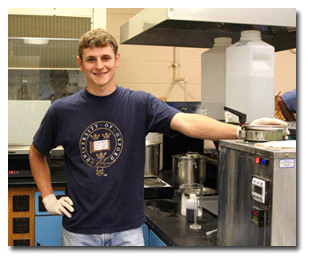
Valgene Lehmann Research Laboratory

The mission of the Val Lehmann Research Laboratory is to provide students and faculty in the College of Agriculture, Natural Resources, and Human Sciences the capability to analyze forage and other biological samples to determine their chemical composition.
In 1980, the lab was a Public Service Forage Testing laboratory supported in part by state funding. Much of the early work done in the lab was to analyze forage samples submitted by producers and for hay samples grown in the area. The lab was also available to graduate students and faculty of the College for teaching and research. In 1985, state funding was lost and the lab was used as a general research space. In the late 1980s, the laboratory was officialy named the Val Lehmann Research Laboratory in honor of the renowned King Ranch wildlife biologist. Val Lehmann was not only the first King Ranch wildlife biologist, but also a visiting research scientist at the Institute who was widely recognized for his research on northern bobwhites in south Texas. During the mid 1990s, a full time laboratory supervisor was hired to assist those working in the lab.
Research
The Val Lehmann Research Laboratory enables students and faculty at the Caesar Kleberg Wildlife Research Institute to conduct nutritional analysis of forages and foods consumed by wildlife. The lab also supports analyses necessary to understand the end products of metabolic studies.
Facility Description
The Lehmann Research Lab is located on the second floor of the John Howe Agriculture Building. All standard nutritional analyses can be processed in The Lehmann Research Laboratory. Samples can be prepared for analysis by either heat or freeze-drying, and grinding. Automated systems are available to conduct crude protein, detergent fiber, gross energy, and crude fat analyses. Total dietary fiber, ash, in vitrodigestibility, dry matter, and tannin content can also be readily quantified. The lab is also equipped with analytical equipment to allow for a variety of special application analyses.